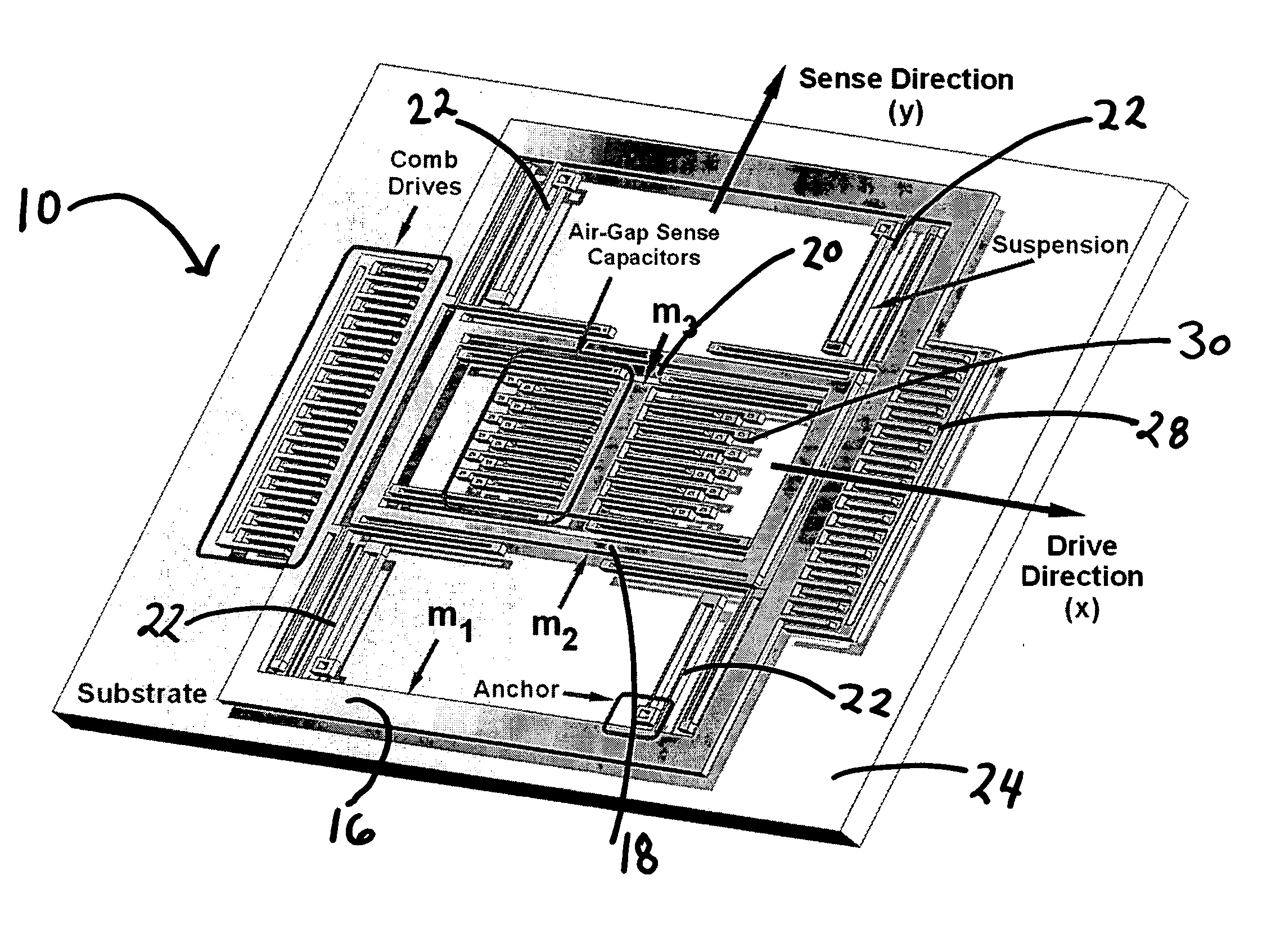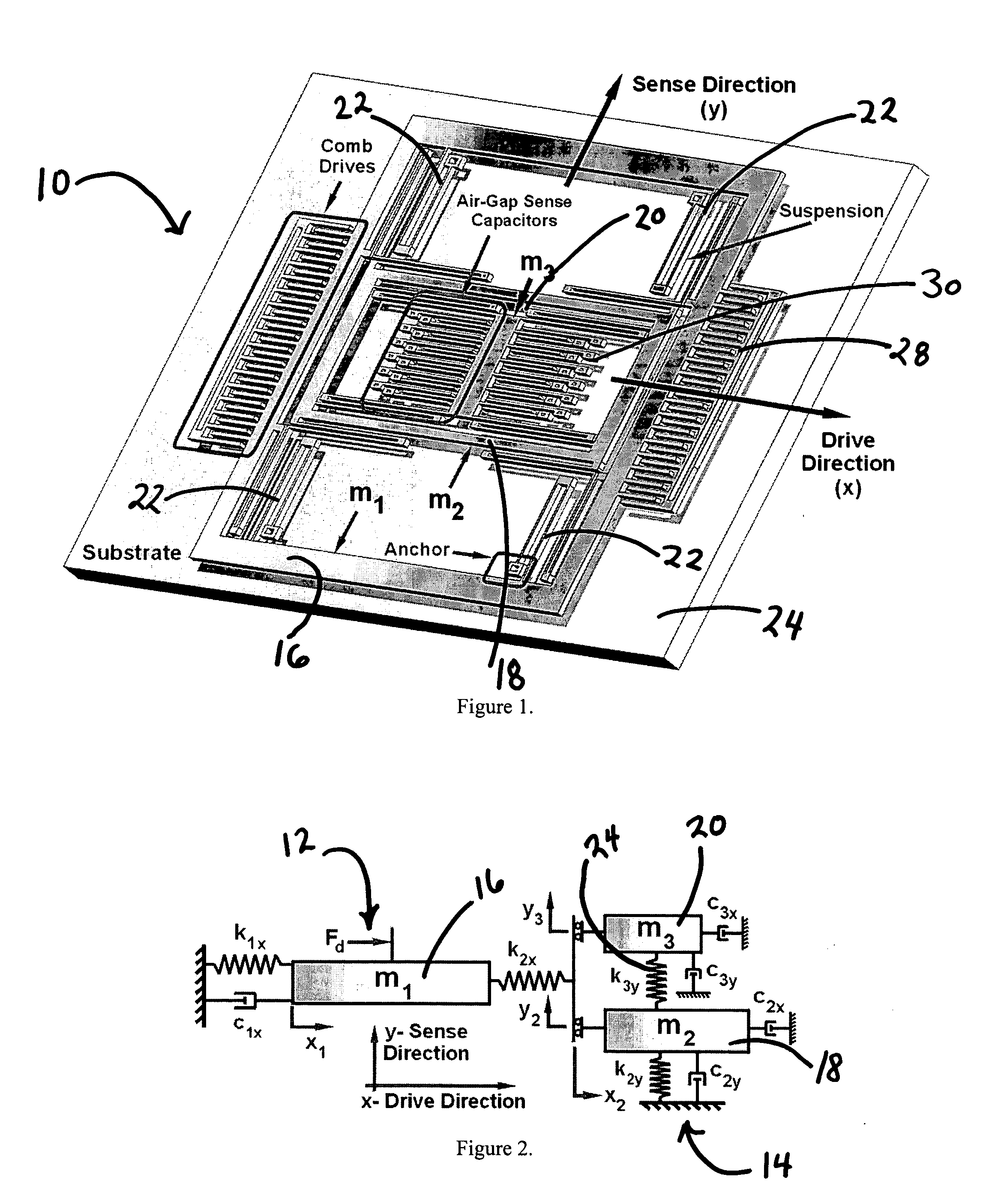Nonresonant micromachined gyroscopes with structural mode-decoupling
a micro-machined gyroscope and non-resonant technology, applied in the direction of acceleration measurement using interia force, turn-sensitive devices, instruments, etc., can solve the problem that none of the symmetric designs can provide the required degree of mode-matching without active tuning, and mechanical interference between modes, so as to minimize instability and large oscillation amplitude
- Summary
- Abstract
- Description
- Claims
- Application Information
AI Technical Summary
Benefits of technology
Problems solved by technology
Method used
Image
Examples
Embodiment Construction
[0039] First, we present a detailed analysis of the conventional gyroscope dynamics emphasizing the related challenges. Second, the design approach and the principle of operation are presented, together with a detailed comparison of the 4-DOF system characteristics to a conventional gyroscope. Third, the dynamics of the device is then analyzed, and fourth, a MEMS implementation of the design concept is presented along with an approach for determining optimal system parameters to maximize sensor performance.
1. Detailed Analysis Of The Conventional Gyroscope Dynamics
[0040] Almost all existing micromachined rate gyroscopes operate on the principle of rotation-induced Coriolis acceleration detection using a single vibrating proof mass suspended above the substrate. The proof mass is supported by anchored flexures, which serve as the flexible suspension between the proof mass and the substrate, making the mass free to oscillate in two orthogonal directions: the drive direction (-axis)...
PUM
 Login to View More
Login to View More Abstract
Description
Claims
Application Information
 Login to View More
Login to View More - R&D
- Intellectual Property
- Life Sciences
- Materials
- Tech Scout
- Unparalleled Data Quality
- Higher Quality Content
- 60% Fewer Hallucinations
Browse by: Latest US Patents, China's latest patents, Technical Efficacy Thesaurus, Application Domain, Technology Topic, Popular Technical Reports.
© 2025 PatSnap. All rights reserved.Legal|Privacy policy|Modern Slavery Act Transparency Statement|Sitemap|About US| Contact US: help@patsnap.com



